It’s simple, but it’s true. People love stuff. But people don’t just love stuff for stuff’s sake—they love things they have an emotional connection to. And that’s exactly what good merchandise branding does.
Think about that t-shirt you bought at your favorite concert. That shirt may not be much different than a cheaper, store-bought one, but to you it’s special. It reminds you of that amazing concert and when you wear it, it tells the world your tastes and experiences.
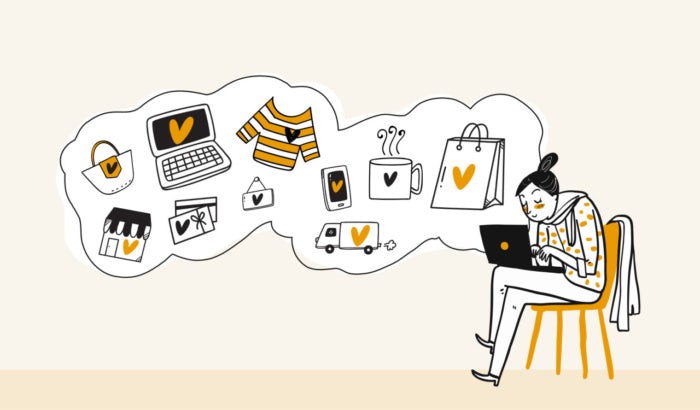
Basically, it brands you—merchandise can turn you into a grassroots brand ambassador. Merchandise branding furthers brand recognition and makes buyers feel like they’re part of the brands they love. In other words, branding merchandise gives you a direct connection to your fans.
Let’s take a closer look at merchandise branding to see how brands across the globe are doing it and which pitfalls to avoid when you’re designing your own branded merchandise.
- What is merchandise branding?
- Who are you?
- Who are your customers?
- Creating a visual brand persona
- Creating consistently branded merchandise
- Choosing which kinds of merchandise to brand
- Beyond merchandise branding
What is merchandise branding?
—
Merchandise branding is simply the process of branding your merchandise—printing your logo on t-shirts, creating stuffed animals of your mascot to give out at corporate events, getting stickers made of your logo or creating custom drinkware to enjoy your branded craft beer in.
Before we dig deeper into merchandise branding, let’s talk about branding as a concept.
Branding is the process of communicating to the world who you are. It’s the action of making deliberate design choices to show off your brand identity to prospective buyers, vendors, investors, business partners and competitors.
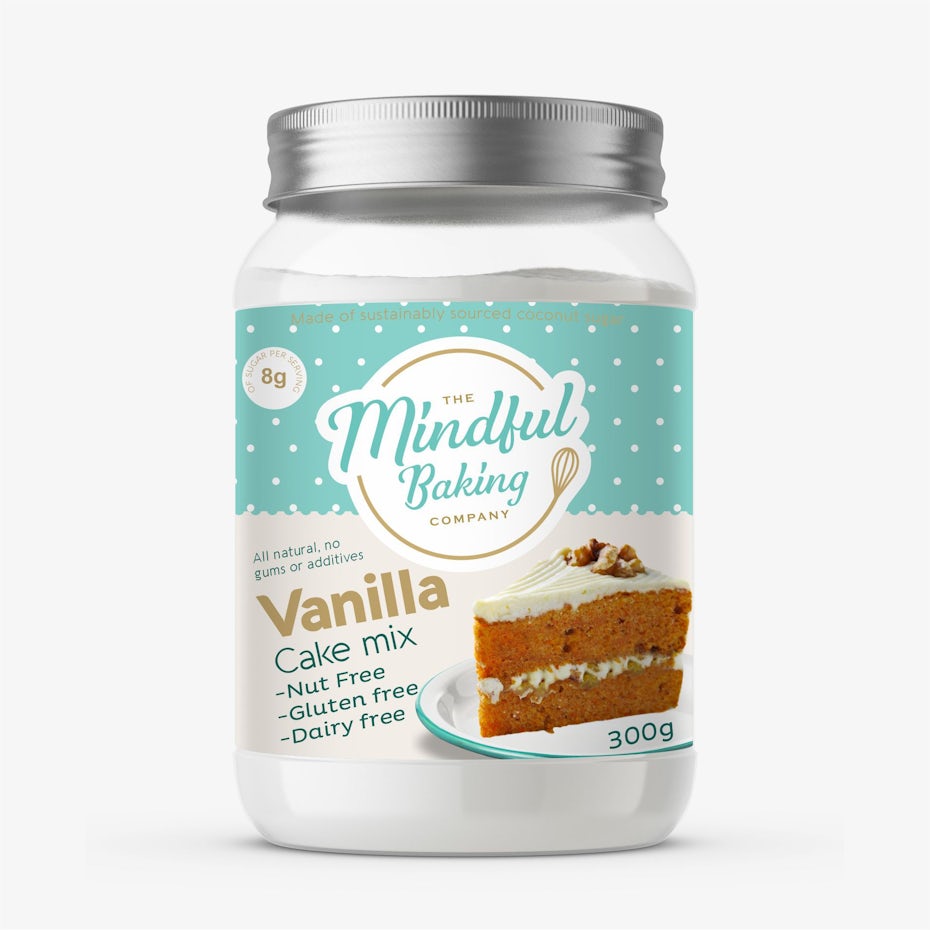
In their label design for The Mindful Baking Company, neoflexdesign communicates key points about the company through design choices. For example, the combination of cheerful green and white shows it’s an eco-friendly, approachable and clean brand that’s free of artificial preservatives. This is branding in action.
Your brand identity comprises those deliberate design choices that you make. It’s the color palette of your website, the voice of your text content and the imagery of your logo. Let’s break down the design choices on neoflexdesign’s label for The Mindful Baking Company individually:
- the simple, sans serif font on the bottom half of the label
- the script-inspired font within the circular logo
- the soft color palette
- the prominent photograph of the finished carrot cake
- the retro polka-dot pattern at the top
Put them all together and you’re looking at The Mindful Baking Company’s brand identity.

Another crucial factor is the world’s perception of you: effective branding means clearly defining your position within your industry and creating something your target audience responds to.
Looking at welikerock’s skateboard deck design for Yocaher Skateboards, how do you perceive Yocaher as a company? The color palette, the messaging, the fonts, the illustration style of the walking donut and the sunbeam-like lines expanding behind the mascot work together to intentionally create a unique impression. And that impression is Yocaher Skateboards’ brand.
No matter how you do it, the end goal of merchandise branding is to make your brand tangible so that customers can own a little piece of… you.
Who are you?
—

The first step in successfully branding yourself and your merch is getting a clear picture of who you are as a brand. Take some time to envision your business as a person and ask it the following questions:
- Are you playful or serious?
- Are your products or services priced higher, lower or about the same as your competition?
- What do you offer your customers?
- How are you different from your competitors?
- How are you and your competitors – and the brands you aspire to compete with – similar?
- What are your values?
- Are you modern or old-school?
- How large of a company are you?
- What do you do best?
Think about the brand behind milomilo’s tote bag design. There’s a reason they opted for an illustration over an abstract image, just like there’s a reason they chose straps made of rope rather than fabric or another beachy cord like a surfboard leash. What do these choices communicate about their brand?

Who are your customers?
—
After you’ve determined who you are, determine who your customers are. Just as before, answer a few questions about your target audience, such as:
- What do they value?
- What do they expect from companies?
- How do they want companies to speak to them?
- What would they enjoy for merchandise?
- Would certain features on merchandise be more helpful or effective?
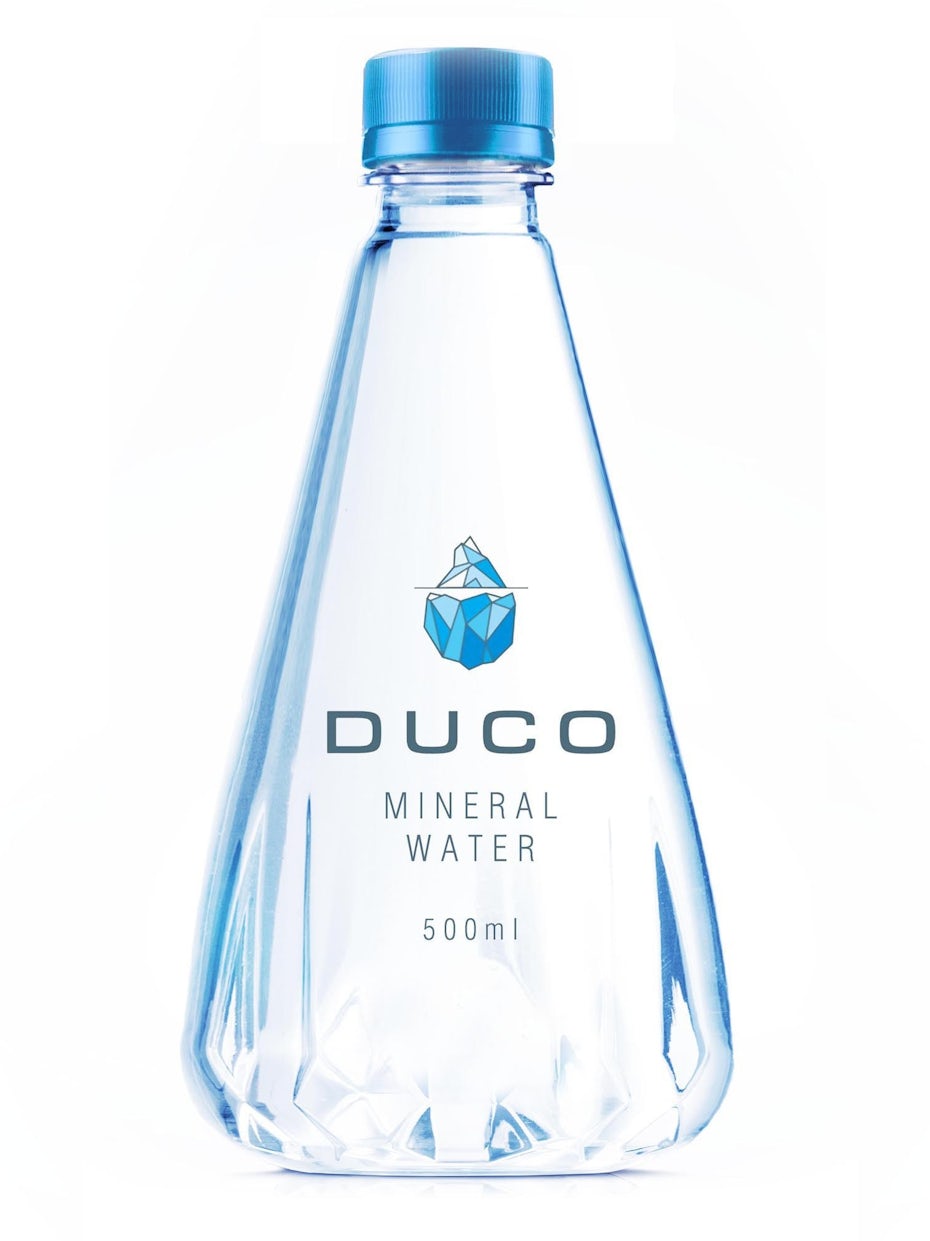
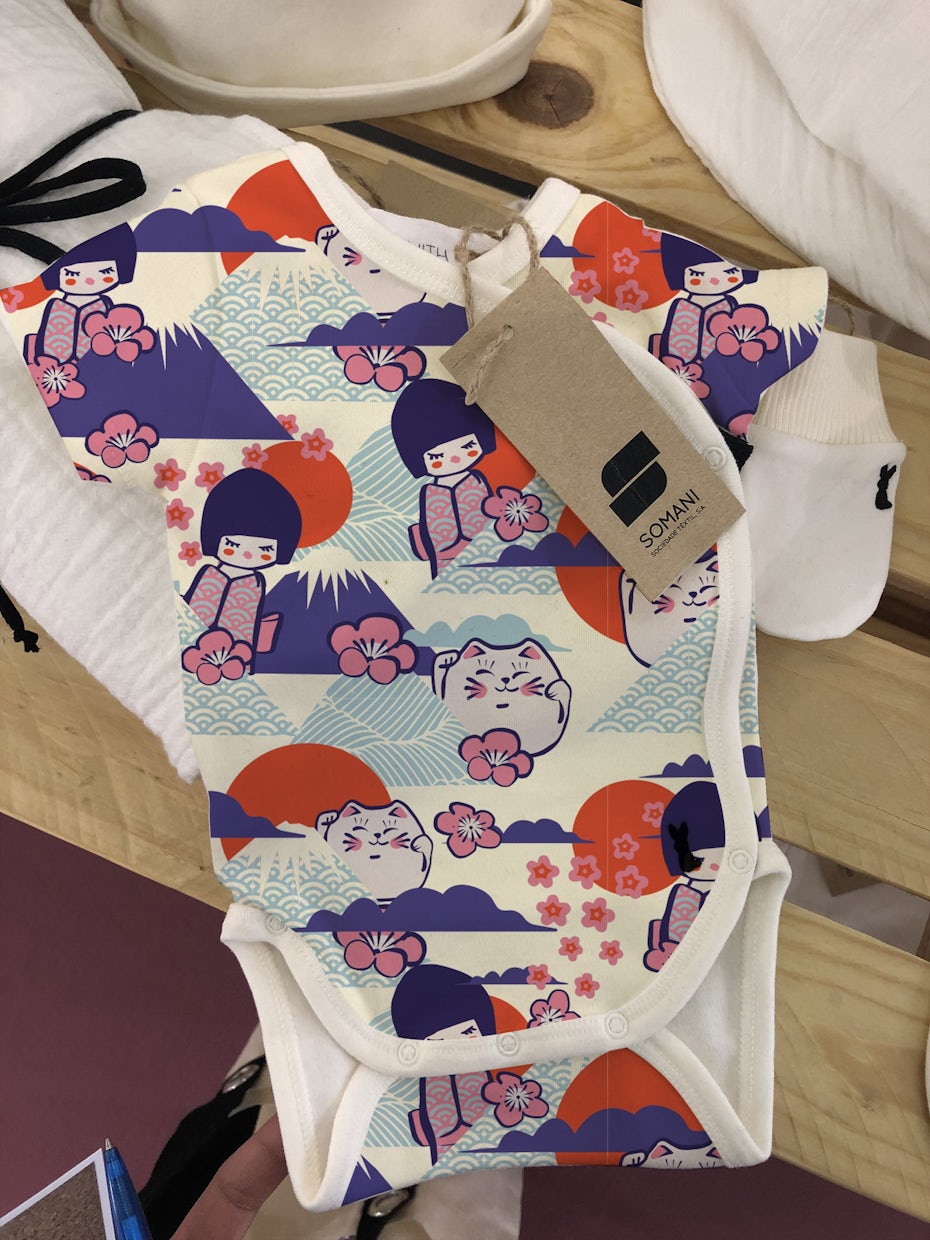
Duco’s target consumers are people who consider themselves water connoisseurs, people willing to pay extra for crisp, glacier-pure water so they don’t have to sip who-knows-what’s-even-in-it tap water. So, to let those consumers know Duco delivers the kind of water they want, neoflexdesign created a crystal-clear bottle adorned with a small, simple iceberg in a fitting style.

Knowing what they value and what they need from your company helps you flesh out your brand’s visual identity. You can zero in on exactly which kinds of merchandise you should be branding to make a genuine connection with them.
Creating a visual brand persona
—
Once you’ve got a strong grasp on who you are, who your customers are and how these mesh together, you’re ready to brand yourself. Create a cohesive brand identity means by choosing:
- Typography. The fonts you use in your logo, web design, ads and elsewhere play a big role in how people perceive your brand. Think about it: script fonts tend to feel fancy, while block letter fonts feel straightforward and utilitarian. Serif fonts add a dash of class, whereas sans serif fonts feel accessible and affordable.
- Color. Colors have a subliminal influence on people. For example, red can elicit feelings of passion, anger or general intensity. White often symbolizes purity, cleanliness or a fresh start. So as you craft your brand identity, think about who you are, what you’re all about and which kind of audience you’re targeting – then choose your colors accordingly.
- Shapes and graphics. Another key part of your brand identity is the shapes you use in your logo, as well as other branding materials like a custom pattern on branding merchandise apparel. Triangles symbolize action and motion, whereas squares symbolize boundaries and stability. Circles, a common choice for logo frames, represent openness and friendliness.
- Voice. This is the tone of voice your brand uses in its copy. Are you the kind of brand that uses the latest slang or are you a total grammar nerd? Does your brand paint flowery, highly-detailed word portraits on its blog, or do you say just enough to give your photos context? While your copy isn’t necessarily a visual component of your brand identity, it still needs just as much consideration as every other part.
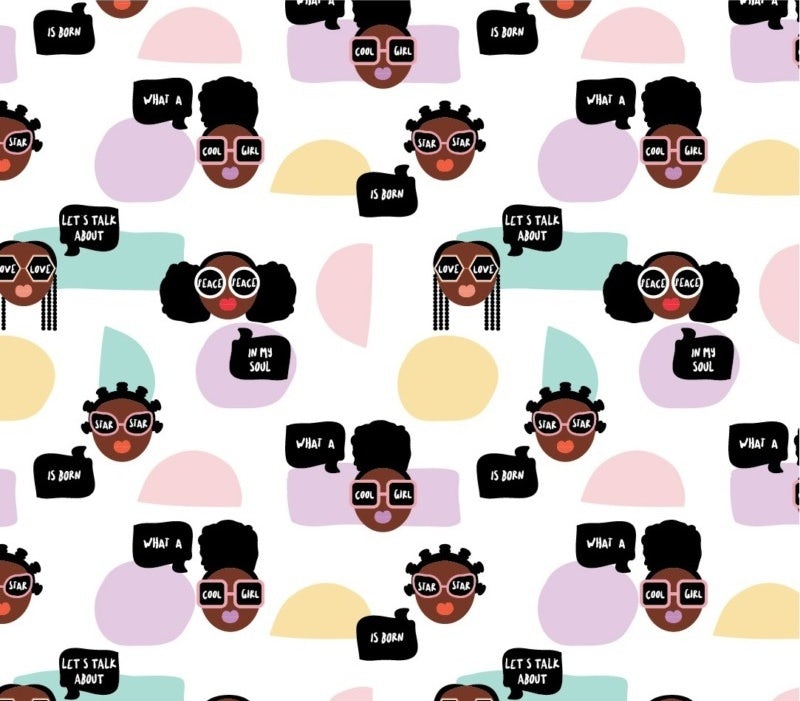

Creating consistently branded merchandise
—

Once your brand identity is complete, it goes everywhere! Publicize your logo, your website, your business cards, your product packaging and of course your branding merchandise wherever you can.
Remember that successful merchandise branding relies on consistency. If your merchandise doesn’t have the same feel as your other branded property, it won’t immediately register as yours. To see on-point, consistent branding, take a look at agnes design’s bib designs. Although each of the four bibs is unique, they all retain a consistent look and feel, largely in part to the warm color palettes and hand-drawn style. It’s clear that they’re all part of the same set, and it’s easy to imagine buying them together in a four-pack.
To really understand the importance of consistency in branding merchandise, consider the consequences without it. Angiangi’s wine glass design, blasted with hot pink, appeals to a certain niche with its modern, luxurious visuals and bold color choice. That may be a perfect choice for targeting bachelorette parties, but what if your brand identity is more of a traditional and classic winery? That wine glass would send mixed messages next to more rustic visuals of your other branding merchandise.


Choosing which kinds of merchandise to brand
—
The next stage in branding merchandise is choosing which items to brand. To make this decision, refer back to your answer for “who are your customers?” Determine what people in that audience like, because the goal of branding merchandise is to provide something your target audience finds valuable.
To get you started, some popular items for merchandise branding are:
- T-shirts
- Baseball caps
- Pens
- Notepads
- Mugs
- Water bottles
- Tote bags
These can all be great choices, especially if you’re new to merchandise branding. But think of them as a jumping-off point, not a complete list. The only limits of branding merchandise are what makes sense for your brand and fits your budget—if you can brand a piece of merchandise no one ever has before, it’ll work as long as your target audience is into it.

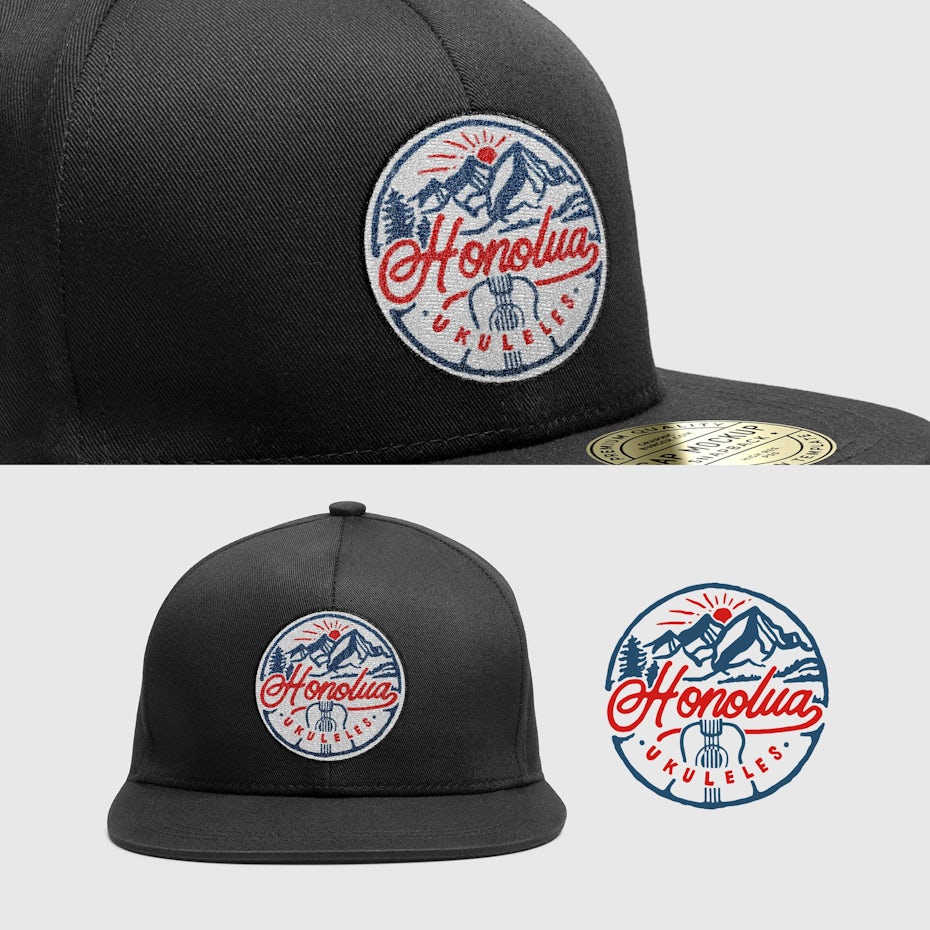
What you want to avoid is the bare minimum. Lots of brands just slap their logos on t-shirts, stickers and mugs and call it a day. Don’t do that.
Take the time to analyze your audience thoroughly and determine which products they’ll actually want. That could very well be t-shirts and mugs… but it could also be tote bags, tech gadgets, auto accessories, home decor, stuff for their pets or apparel other than t-shirts. For example, Honolua Ukeleles determined that fans of their ukeleles were also regular baseball cap-wearers, so designer stevenmink turned their logo into a great-looking cap patch.


Don’t be afraid to ask your audience directly what products they’d like to see from you. Email surveys, online polls or social media banter are effective ways to get a clear sense of what they’d respond to best.
And you might be surprised—maybe branded gardening tools will be a hit with the people buying your organic, GMO-free seeds or a line of experience-inspired incense blends will go viral with fans of your free-spirited travel blog.

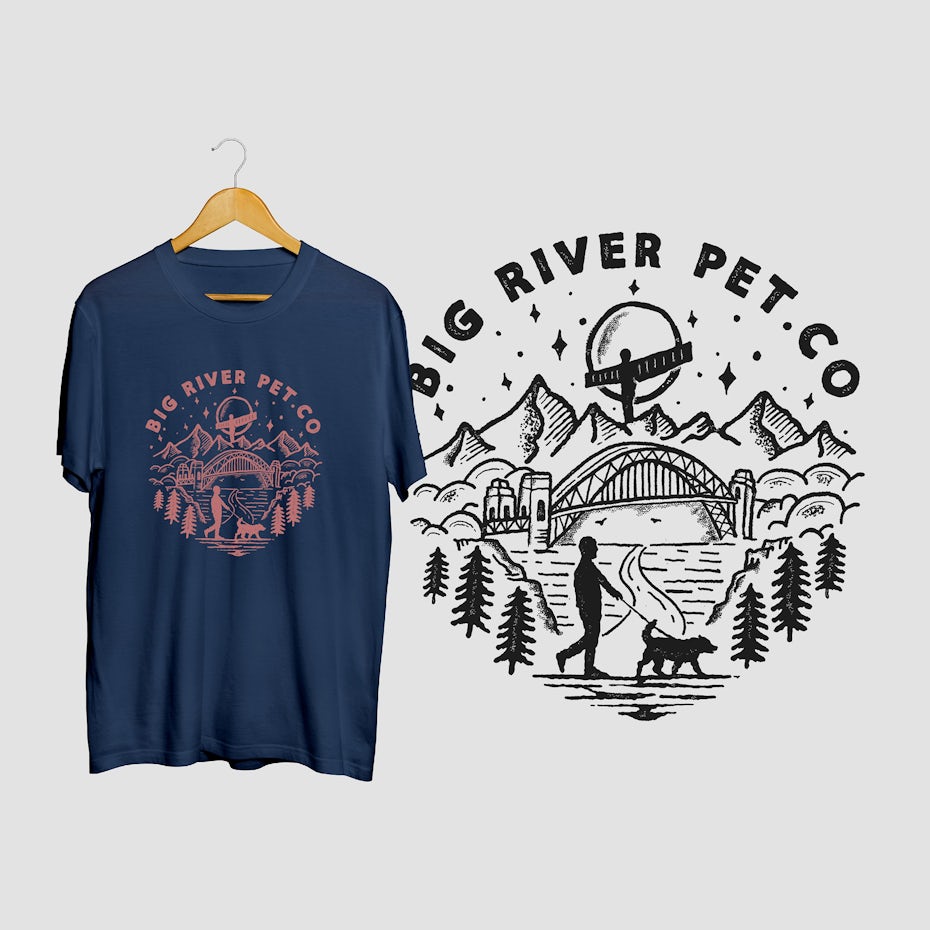
Beyond branding merchandise
—
Branded merchandise doesn’t exist in a vacuum—it’s part of a larger brand strategy. Keep this in mind and think beyond the merchandise itself when you’re developing your strategy.

The packaging your merchandise comes in should be designed as carefully as the branded goodies it contains. After all, the package sets the tone for the buyer’s interaction with your product. Stan Brand Design kept this in mind when they designed the packaging for Life Bump acrylic marker pens. People buying art supplies are attracted to eye-catching visuals, so making art from their packaging—the very first thing shoppers see—was a no-brainer.
Branded merchandise can also tie into other promotions. For example, let’s say you operate a coffee shop. You can offer discounts to customers who bring in branded refillable mugs when they visit for their daily cup of java. Or if you’ve got branded t-shirts, hats and other apparel out there, create a social media promotion around fans sharing pics of themselves wearing your gear.

Ready for merchandise that’ll sells out in seconds?
—
Branded merchandise is a way for your fans to take home a little piece of your brand and make it part of their daily lives. Take some time to really get into their heads to figure out what they’d like best, then give them exactly what they want—or maybe something awesome they didn’t realize they wanted until you unveiled it.
The post Merchandise branding: how to create great merch for your brand appeared first on 99designs.
Merchandise branding: how to create great merch for your brand posted first on https://www.lilpackaging.com
No comments:
Post a Comment